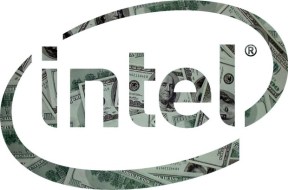

Intel announced today that its sales for the third quarter will be lower than expected due to a decline in demand. Intel microprocessors use the x86 architecture found in most PCs and Macs today. Instead of $14.2 billion, Intel now anticipates $13.8 billion in revenue. It is not due to competition as AMD faces the same problem.
Even more important, that decline demonstrates once again that a major shift is occurring in the personal computer landscape. Even though the iPad and other tablets were quickly tagged as content consumption devices, companies such as Apple realized that tablets were canibalizing computer sales.
Intel failed to adapt to the ever-changing space and the vast majority of its revenue still comes from x86 processors. Of course computer sales are still very strong. But in August, Dell’s revenue fell 8% and HP reported a major $8.9 billion loss.
Conversely, iPad sales were up 181% year over year — and that quarter, Apple reported a “miss”. When it comes to chips, the companies that benefit from those new devices are Samsung and Qualcomm who manufacture systems on a chip with technology licensed from ARM.
Intel still hopes that Microsoft will play an important part in the coming quarters. Windows 8 will be released on October 26 and could foster PC sales. At the same time, Microsoft is betting on Windows 8 tablets with two variants of the same operating system.
Cheap ARM-based tablets with Windows 8 RT will have to co-exist with Intel-based tablets or tablet laptop hybrids. And then there is the Microsoft surface. If we ever get a release date and prices, Microsoft’s take should come with ARM and Intel chips, depending on the model.
Intel has plans to release power-efficient chips as well. Some Windows Phone 8 devices should come with an Intel mobile system on a chip that competes directly with ARM-based systems on a chip. In the end, these low-power options are what will drive the next generation of mobile computers – whether Intel is ready to move away from “big iron” or not.
No comments:
Post a Comment